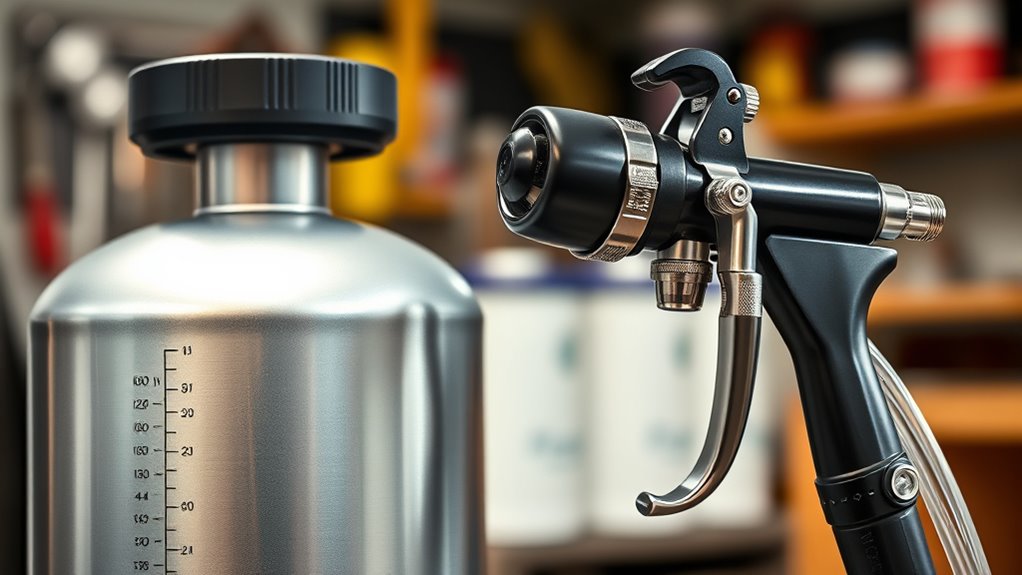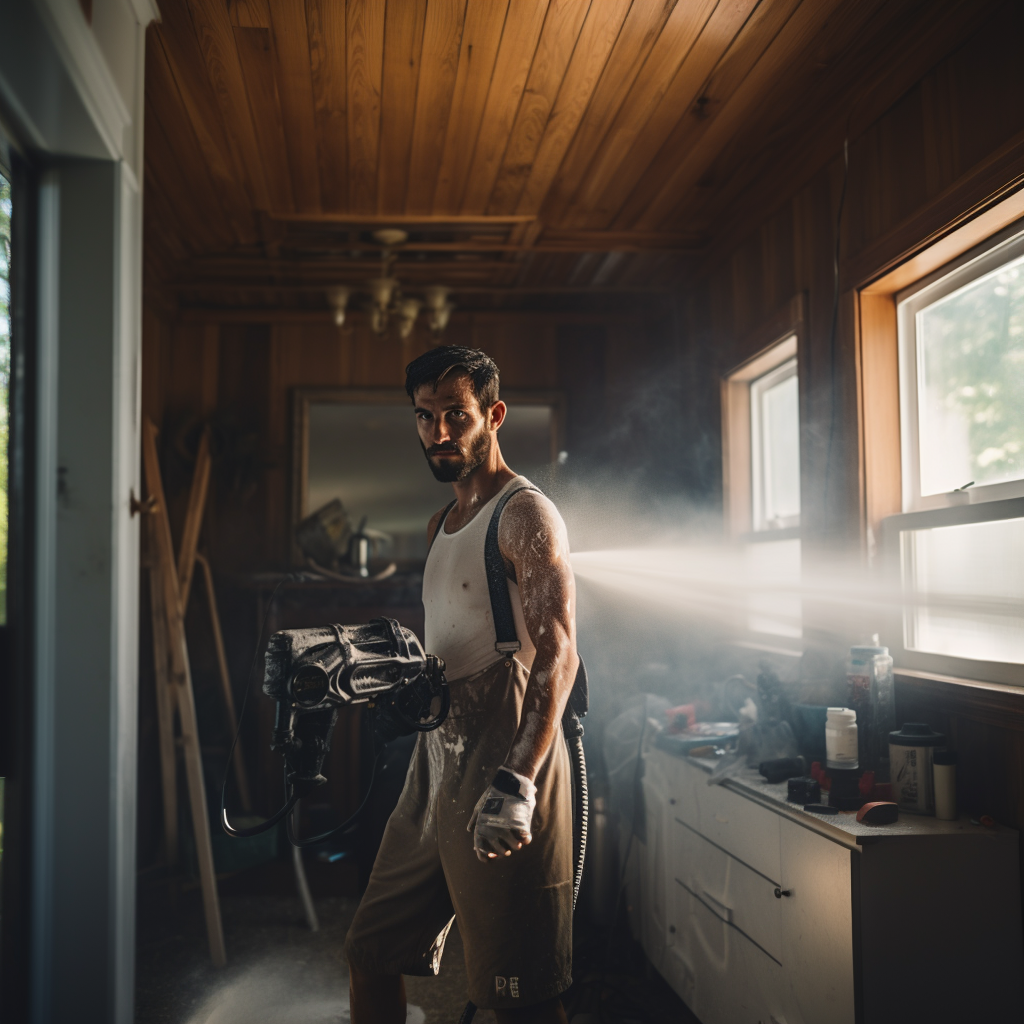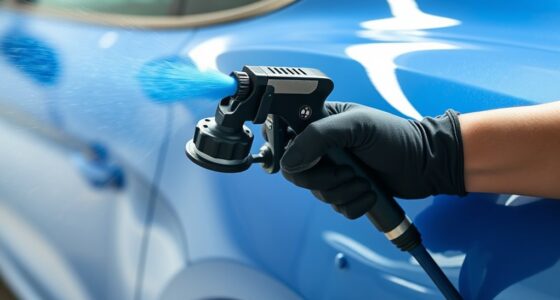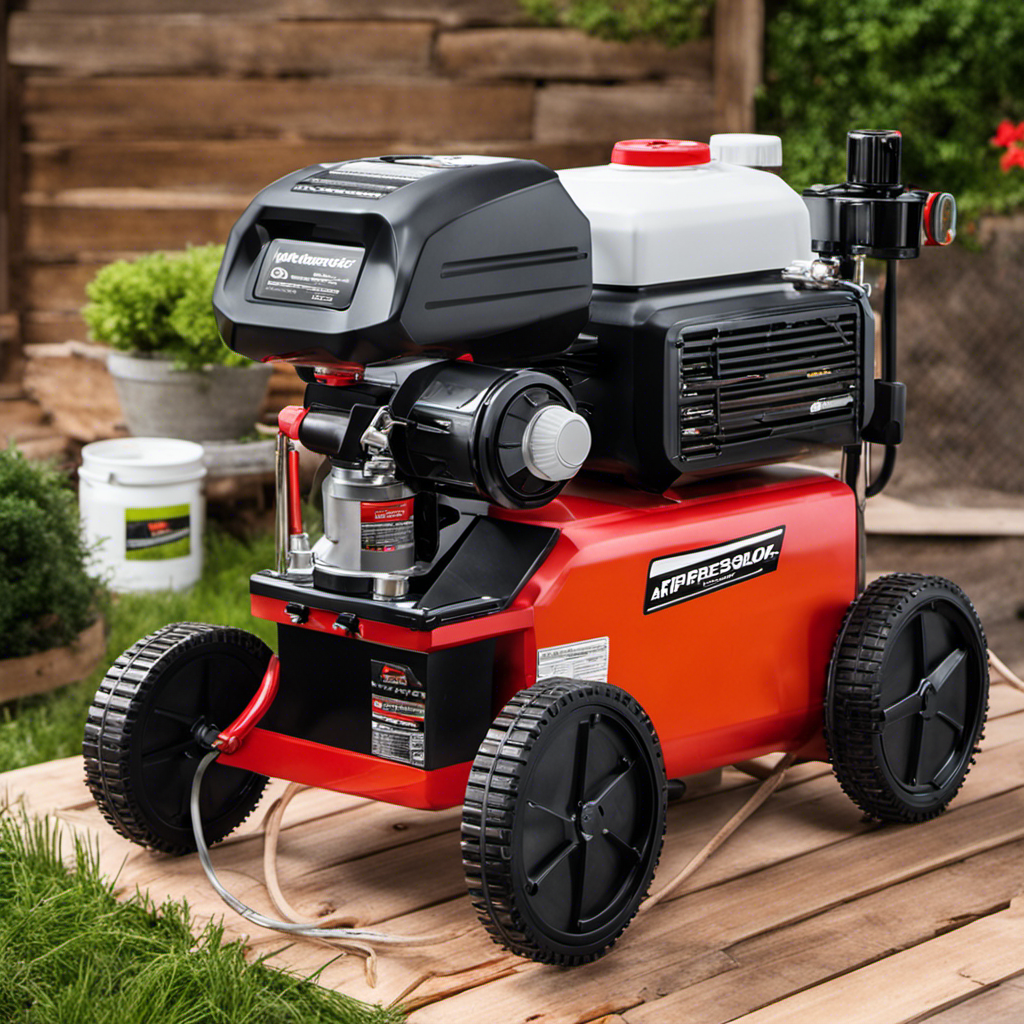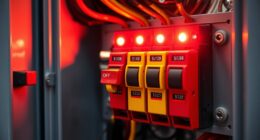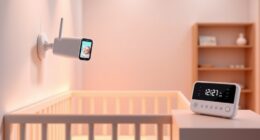To choose the right air compressor for a spray gun, you need to guarantee it can deliver 20-30 PSI and enough CFM as specified by your spray gun’s manual. A compressor with a tank size of at least 6 gallons is good for small projects, while larger jobs might need bigger tanks. Pay attention to noise levels and portability, but matching the pressure, airflow, and tank capacity is key for smooth, professional results; if you’re curious, there’s more to learn about making the perfect choice.
Key Takeaways
- Match the compressor’s PSI output (typically 20-30 PSI) to the spray gun’s recommended pressure for optimal results.
- Ensure the compressor’s CFM rating meets or exceeds the spray gun’s minimum airflow requirement for consistent spray patterns.
- Choose a tank size that supports your project duration, with larger tanks offering more continuous airflow but less portability.
- Consider noise levels if working indoors or in confined spaces, opting for quieter models if necessary.
- Balance compressor capacity, portability, and workspace needs to select the right size for your spray painting projects.
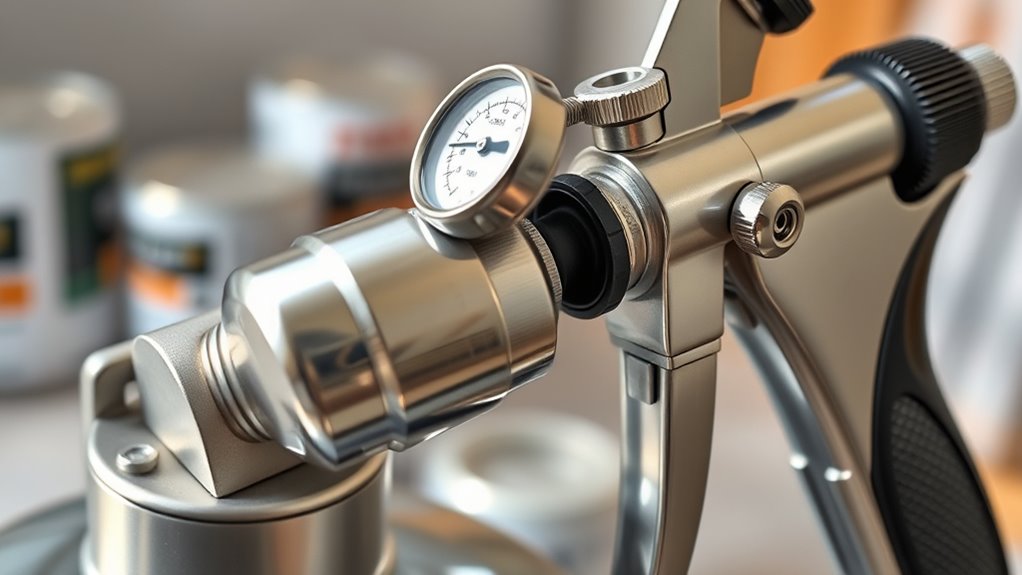
Choosing the right air compressor size for your spray gun is essential for achieving smooth, professional finishes. The key factors you need to take into account are air pressure, compressor noise, and the compressor’s capacity to deliver consistent airflow. When selecting an air compressor, you want to verify it can provide the right amount of air pressure to operate your spray gun efficiently. Most spray guns require a specific PSI (pounds per square inch), typically between 20 and 30 PSI for general use, but some high-performance models might need more. If your compressor can’t reach or maintain the necessary pressure, your finish will be uneven, with issues like runs or dry spots.
In addition to air pressure, compressor noise is an important consideration. Some compressors are louder than others, which can be disruptive, especially if you’re working indoors or in a confined space. If noise level is a concern, look for models designed to operate quietly. These often feature noise-reducing features like sound enclosures or improved motor design, making your work environment more comfortable and less distracting. Keep in mind that quieter compressors sometimes have larger tanks or different mechanisms, so balancing noise level with capacity and portability is key.
Another critical aspect is the compressor’s airflow capacity, often measured in CFM (cubic feet per minute). Your spray gun’s manual will specify the minimum CFM needed for ideal operation. If the compressor can’t supply enough airflow, you might experience inconsistent spray patterns or air pulsation, which leads to a subpar finish. For small projects or light touch-ups, a compressor with a lower CFM rating might suffice, but for larger projects or frequent use, you’ll want a unit with a higher CFM rating to sustain continuous operation. Additionally, understanding the Frictional unemployment can help you identify opportunities to upgrade your equipment or skills, ensuring optimal performance.
Tank size also influences your choice. A larger tank allows for more stored compressed air, reducing the frequency of compressor cycles and maintaining consistent pressure. This is especially beneficial for longer spray sessions. However, larger tanks tend to be heavier and less portable, so consider your workspace and mobility needs.
Frequently Asked Questions
Can I Use a Small Air Compressor for Large Spray Jobs?
Using a small air compressor for large spray jobs isn’t ideal because compressor capacity might not meet your spray gun’s demands. If your spray gun requires high airflow or pressure, a small compressor may struggle, leading to uneven spray or interruptions. Always check your spray gun’s compatibility with your compressor’s capacity, especially its CFM and PSI ratings, to guarantee smooth operation and maximum results on bigger projects.
How Does Humidity Affect Air Compressor Performance for Spray Guns?
Humidity impact can substantially affect your spray gun’s performance. Excess moisture in the air causes uneven spray and can ruin your finish. To prevent this, you should use moisture control devices like filters or dryers. Controlling humidity helps maintain consistent air pressure and quality, ensuring smooth application. Keep an eye on humidity levels and invest in moisture control solutions to get the best results and protect your equipment.
Is Oil-Free or Oil-Lubricated Better for Spray Painting?
Picture pristine paint pouring perfectly—your choice between oil-free or oil-lubricated compressors impacts this. Oil-free benefits include being lightweight, low maintenance, and producing cleaner air. However, oil-lubricated drawbacks involve potential oil leaks, higher maintenance, and risk of oil contamination. You want consistent, clean results, so if you prioritize purity and minimal fuss, oil-free compressors are your best bet. But for durability and longer lifespan, consider oil-lubricated options.
What Is the Ideal CFM for High-Volume Spray Applications?
For high-volume spray applications, you’ll want an air compressor with a sufficient airflow requirement, typically around 12-15 CFM at 90 PSI, to guarantee smooth operation. The compressor capacity should match these airflow needs, providing consistent pressure and preventing interruptions. Always check your spray gun’s specifications to determine its airflow requirements and select a compressor that can deliver reliable, steady airflow for ideal results.
How Often Should I Service My Air Compressor for Optimal Spray Gun Use?
You should follow a regular maintenance schedule to keep your air compressor in top shape for spray gun use. Check the manufacturer’s recommendations, but generally, you should inspect and clean the filters monthly and replace them every 3 to 6 months. Additionally, drain the tank weekly to prevent moisture buildup. Proper maintenance guarantees consistent airflow, prolongs your compressor’s lifespan, and guarantees smooth, quality spray application.
Conclusion
Ultimately, choosing the right air compressor means considering your spray gun’s needs, matching pressure with volume, and ensuring consistent performance. It’s about balancing power with capacity, pressure with flow, and size with durability. When you select the right compressor, you get precision, efficiency, and quality every time. So, assess your projects, understand your spray gun’s requirements, and invest in the right size compressor — for smooth operation, professional results, and confident painting every time.
Franz came aboard the Paint Sprayer Zone team with a background in both journalism and home renovation. His articulate writing style, combined with a passion for DIY projects, makes him an invaluable asset. Franz has a knack for breaking down technical jargon into easy-to-understand content, ensuring that even the most novice of readers can grasp the complexities of paint sprayers.
